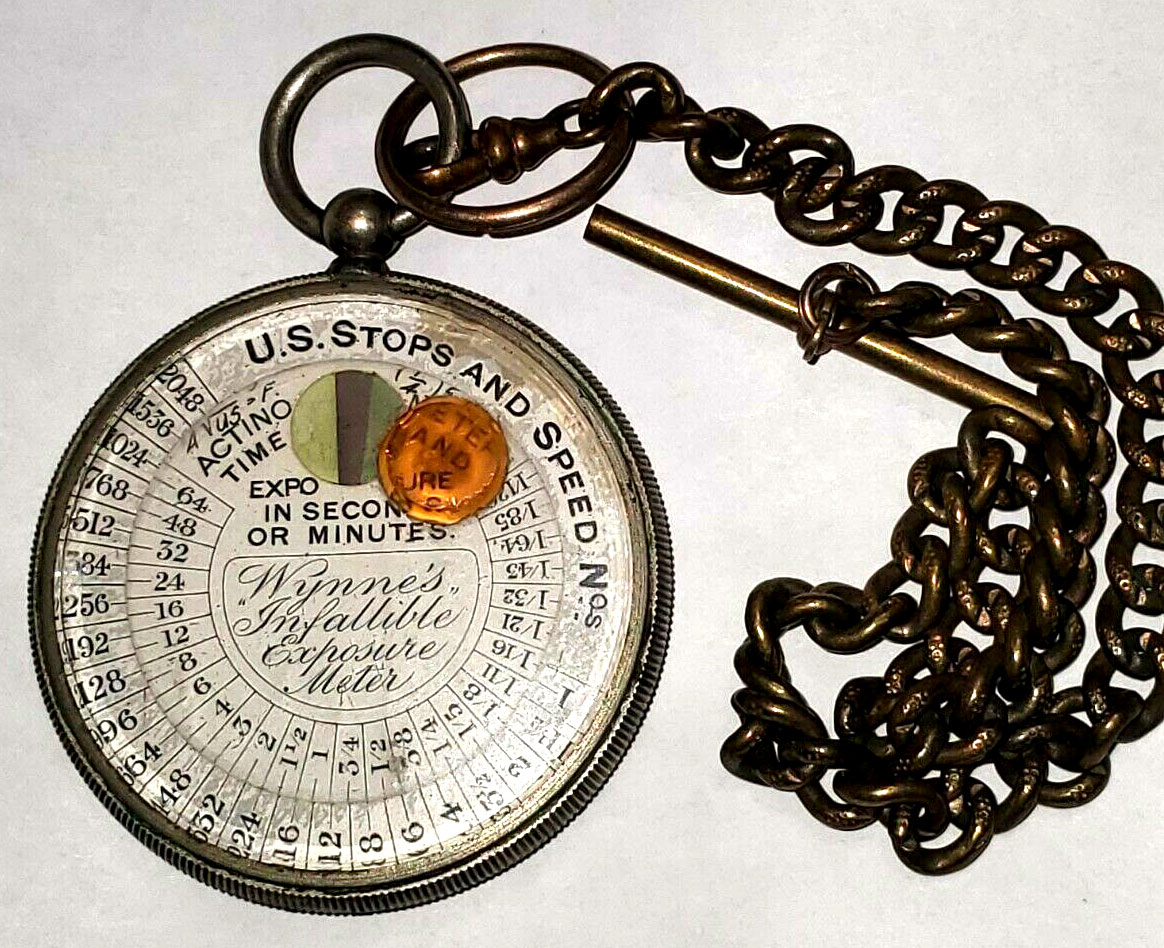
|
 Maker: Wynne Model: Infallible Circa: 1904 Price (new): $2.50 (1903) Measure Type: Incident Measure Cell: Printing-Out Paper |
|
Note: this is no longer in my collection. I'm leaving this page here as a reference. (Plus maybe I'll get another one some day.) This is basically the same as my Watkins Bee. For details on how these meters work, please visit that page. The Infallible Exposure Meter Co. actually antedates this by a few years, and both were made for far longer than most people would think. Wynne started in the early 180s and made them in the early 1930s. There wasn't much to them, just an empty pocketwatch case, some circular-cut pieces of printing-out-paper (paper that turns dark directly on exposure to light; no need to develop it with chemicals), a circular-cut top paper that had the aperture cut, and a glass dial cover. Both meters were made in the UK—the Bee in Hereford, England and the Infallible in Wrexham, Wales. According to earlyphotography.com.uk, they began exporting the USA version in 1904. If I can figure out a better way to date my copy, I will update here. Unfortunately mine did not come with a box or instructions; just the bare meter. Mike Butkus has the PDF version for the "hunter" case version of this meter, which would be the same thing. A hunter case pocket watch (or light meter, in this case) simply has a hinged metal cover that closes to protect the dial, and the winding stem is rotated to the 3 o'clock position instead of the 12 o'clock position. There's also a version that was "print meter". It was a small box with holes drilled in one side, and a series of graduated steps fitted behind the holes. In the dark, you open the box and put in a piece of printing-out-paper. Slip the box into a light-tight cover and you're good to go. When you want a reading, you take the cover off and let the incident light fall on the box for a certain amount of time. When you reach that time, you open the box and look at the paper, and the paper will be exposed in steps. The brighter the day, the more steps will be visible. From there you can determine your speed/aperture pairs. I don't have this. I'm keeping an eye out for it. |
|
©opyright by James Ollinger. All Rights Reserved.
Company names and models are registered trademarks of their respective owners
and are not affiliated with this website in any way.
